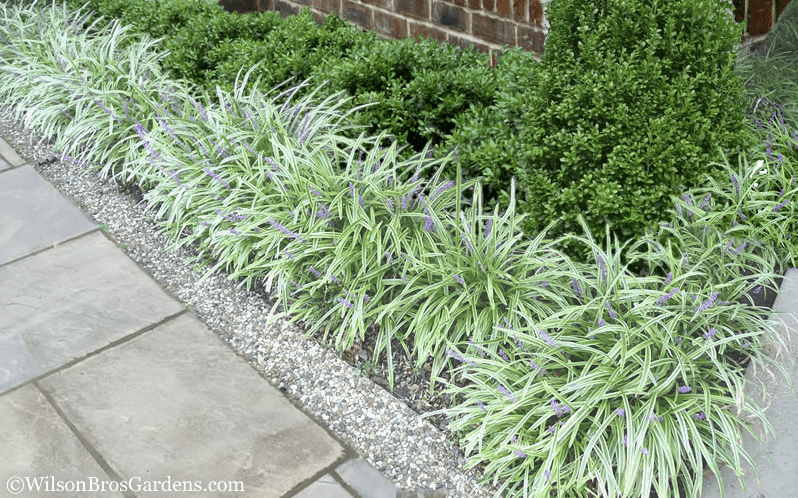Landscape Elements: Color Blocking
We last learned how layering plants of different heights in beds added depth to your landscape. Another way of creating depth and interest is through color blocking. This is achieved by using plants of a different color in a pattern within the bed.
A border of short plants that outlines or defines the edge of a bed such as a variety of Liriope or annual seasonal color is a simple example of color blocking.


You can get creative and plant a row of contrasting plants in a curve shape within your bed. Notice how the curve (y plants below) flows through the bed, this helps soften the straight edge of a square or rectangular bed shape.

Planting in triangle shapes of like colored plants is also a form of color blocking. You can alternate the point of the triangle being at the front (purple #4 triangle) or back of the triangle (green grasses triangle) throughout the bed. Using a combination of triangles with straight rows and other elements allows you to use a variety of plants within a bed that complement each other.

A striking technique is to plant seasonal annuals, sedums or shrubs in a ribbon flowing through the bed as shown above with blocks of other plants in the curved spaces.
Planting large distinct areas of different colored plants is another form of color blocking as seen in this picture of 2 contrasting colors of caladiums in this bed.

As you can see, color blocking can be done in many ways and you are only limited by your imagination. In the next newsletter we will learn how to incorporate items other than plants into beds that create unique focal points in your landscape.


